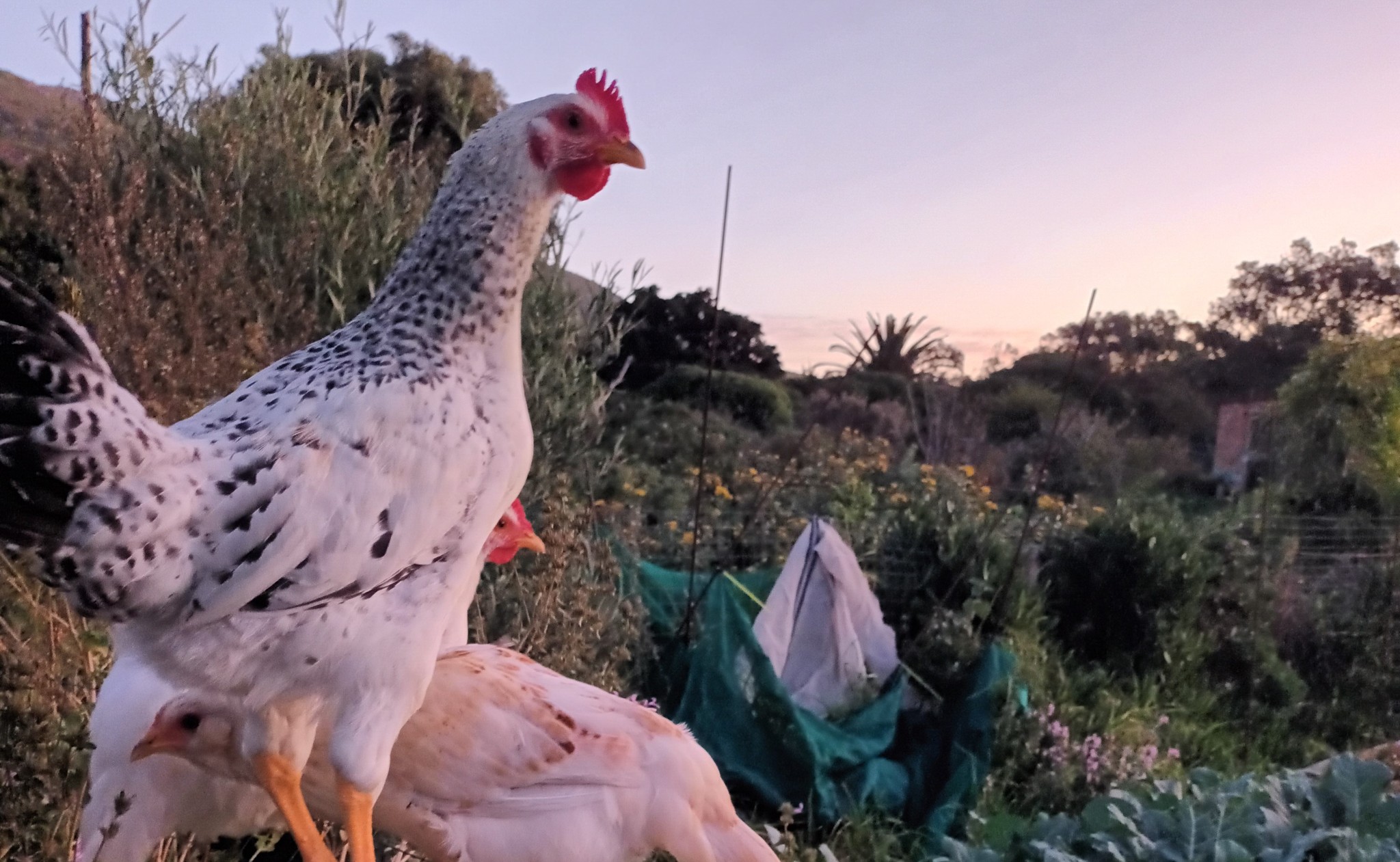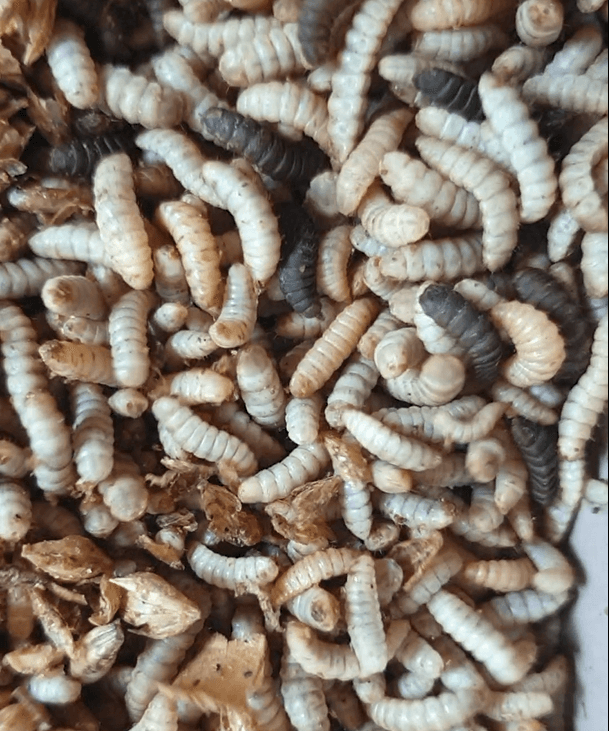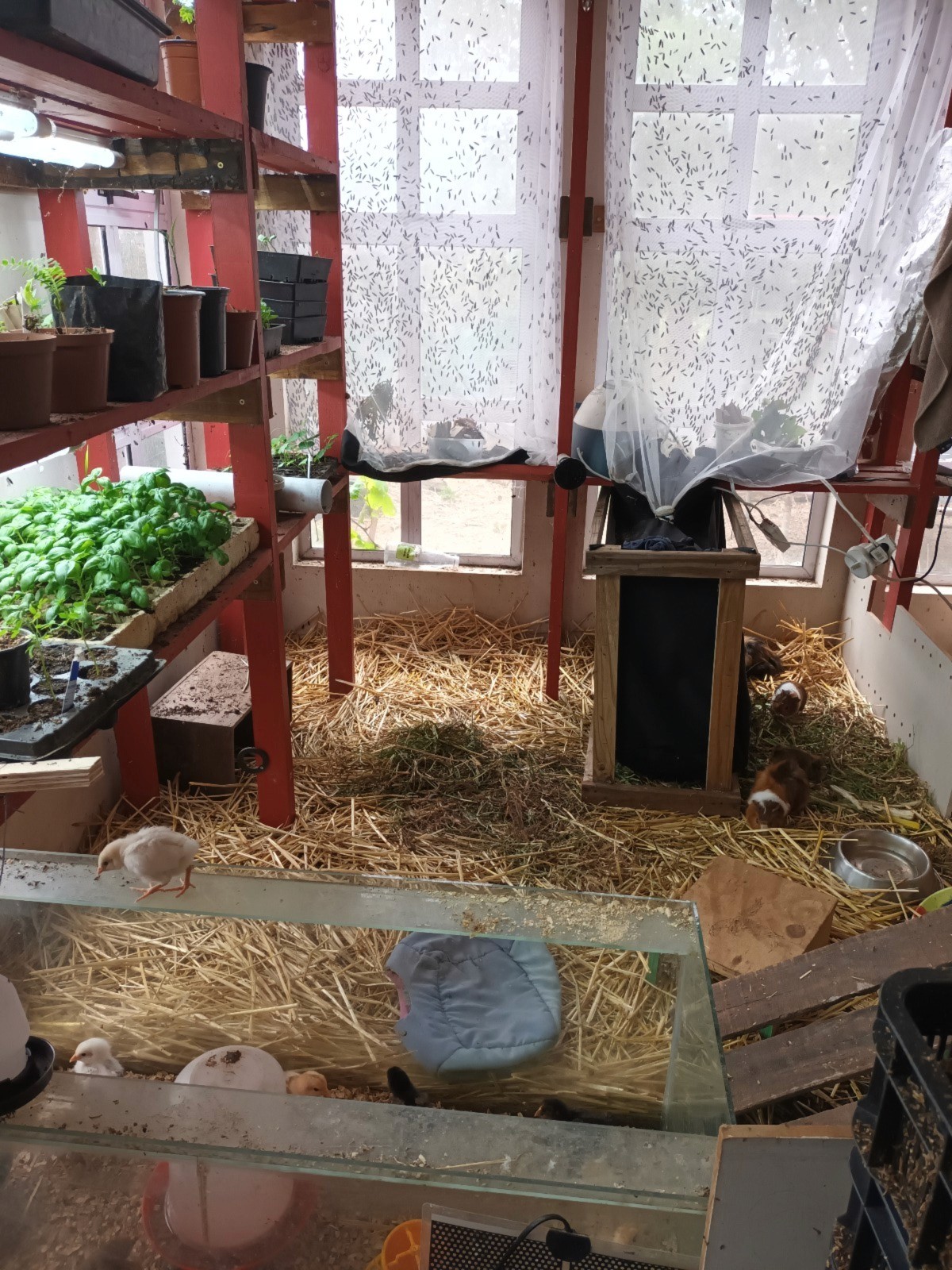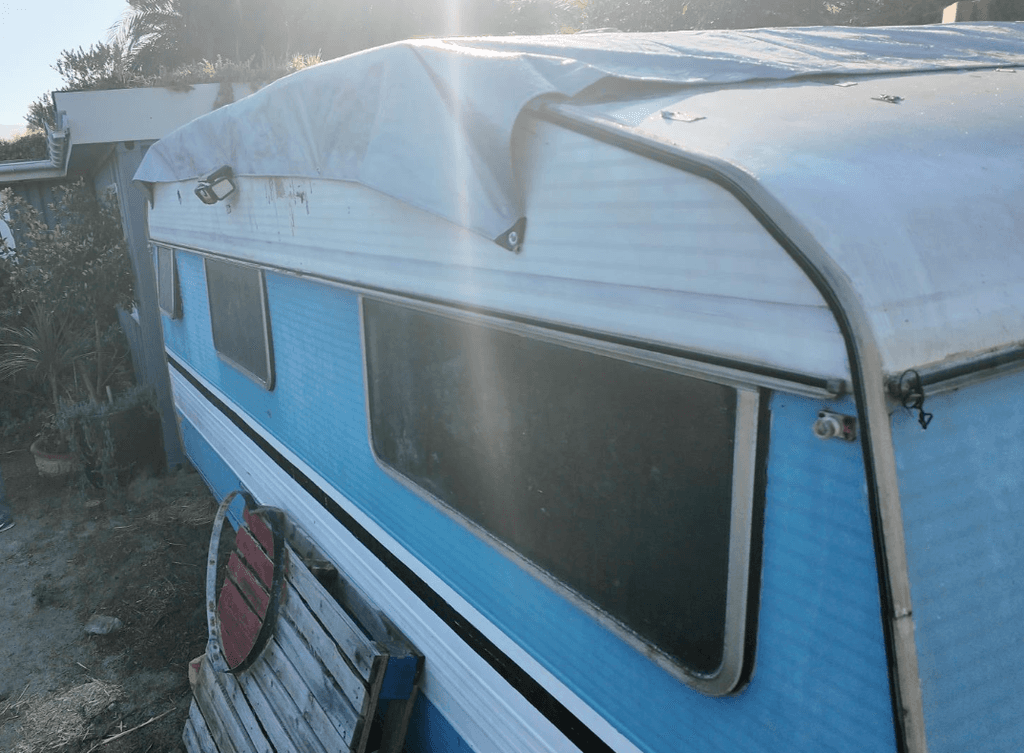On our small homestead, figuring out feed for our animals has been a long journey.
Raising healthy, happy, sustainable chickens that lay great eggs
We want our chickens to have wonderful healthy lives, we want to have truly great eggs, and we want to live more sustainably.
Finding a way to feed our chickens sustainably was complex. It is difficult to figure out what is in commercial layer feed in South Africa. We know it typically involves a lot of processing, large monocrops, and sometimes fishmeal.
BSF as sustainable protein
Laying hens need a balanced diet, including adequate protein. Where kitchen scraps and weeds from the garden provide calories, BSF provide a sustainable source of protein.
They are remarkable as a chicken supplement for healthy chickens. And chickens LOVE them. Our chickens eat between 10 and 20 larvae per day, and this provides their protein requirements. So a little goes a long way.
We look forward to supporting you in your chicken journey! If you'd like to buy live larvae, you can reserve via our shop.
If you'd like to watch our video workshop showing our system in depth, you can get access here.
Learn more about Black soldier fly larvae
Our BSF nursery
BSF need light, warmth and humidity to lay eggs. So we have integrated our breeding area with the warm, light environment for raising our chicks and our seedlings.
We collect eggs from our two breeding cages and raise the young larvae for a few days in the sun room, on nutritious food (usually bedding from our chicks, which contains a lot of spilled chick feed). Thereafter, they are placed in trays and go out to our caravan.
Larvaeland, our caravan
We grow out BSF larvae in in a very old caravan. Here they are fed on manure and spent barley grain from local breweries. After 10-12 days, the larvae are ready to be eaten by our chickens and ducks. We sell about half of our total output, and at the moment produce about 20-30kg of BSF each week.
Consultations
When I was starting our BSF operation, one challenge was to find a system that matched our needs. Gradually, with help from a friend, Marc Lewis, I started to experiment and develop a system that suited us.
This involved refining four questions.
What conditions were needed by BSF to maintain a robust breeding population?
What are the needs of our farm and immediate community i.e. how much volume of BSF larvae is required per week for our chickens and to sell live.? What sized system would match that need?
What volume of organic matter is feasible to feed without heavy machinery, given our available labour, and how could we integrate that organic matter so that it is somewhat flexible- i.e, we have many systems to absorb organic waste, and we triage waste coming onto the farm to see where to route waste (worms, chickens, goats, ducks, biodigester, BSF)
How could we design a system to match the needs explored in the first three questions (BSF growth and breeding requirements, farm and community demand for BSF, organic waste flows).
Creating BSF system that is well-integrated with the needs of our farm has saved us huge amounts of animal feed, while diverting over four tons of waste per month. I’d love to help others around the world do the same. I love thinking in terms of intersecting, modest-sized systems that serve multiple purposes, rather than in terms of stand-alone solutions.
Integrated Feed: A Practical Guide to Black Soldier Fly Farming for Homesteaders
I didn’t have capacity to answer every request about BSF, so Eugene and I have worked hard on an online video series to help answer your questions.
We were worried about feed costs, and concerned about feed contents and sustainability. Global events sent commercial animal feed prices soaring, and this gave us the push we needed to explore alternative systems. We've been homesteading for a decade, so our experience managing inputs of organic waste, and managing our animals health, helped us find good working solutions for our animals that didn't compromise their wellbeing.
I slowly transformed our homestead's inputs by building up a system of Black Soldier Fly (BSF) cultivation that worked for our scale. In our video series, I share our low-cost system that produces more than 30kg of protein-rich BSF larvae weekly - enough to feed hundreds of chickens, quails, and ducks without any commercial feed.
Why This Course Is Different
I slowly transformed our homestead's inputs by building up a system of Black Soldier Fly (BSF) cultivation that worked for our scale. In our video series, I share our low-cost system that produces more than 30kg of protein-rich BSF larvae weekly - enough to feed hundreds of chickens, quails, and ducks without any commercial feed.
What You'll Learn:
- How to start and maintain a successful BSF cycle without expensive climate control
- Smart integration with existing composting and chicken systems
- Practical breeding cage designs that work in real-world conditions
- Time-saving techniques that make BSF cultivation manageable for busy homesteaders
- How to recognize and work with your BSF colony's natural cycles
This Package Includes:
- Over 1 hour of detailed video instruction showing our actual working system
- Comprehensive Q&A sessions covering common challenges
- Real solutions for common problems like cycle startup
Perfect For:
Small-scale homesteaders who want to:
- Break free from commercial feed dependence
- Improve their animals' health naturally
- Create sustainable, closed-loop systems
- Potentially earn extra income from excess BSF production
© Heart & Soil Homestead 2023/2024
Cape Town, South Africa



